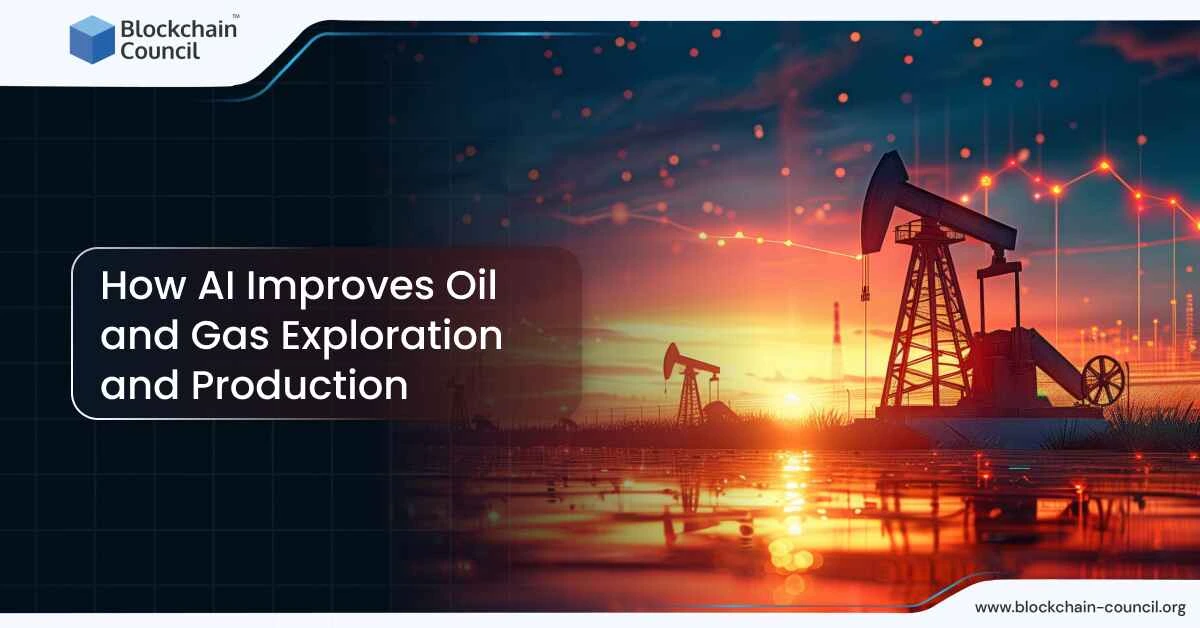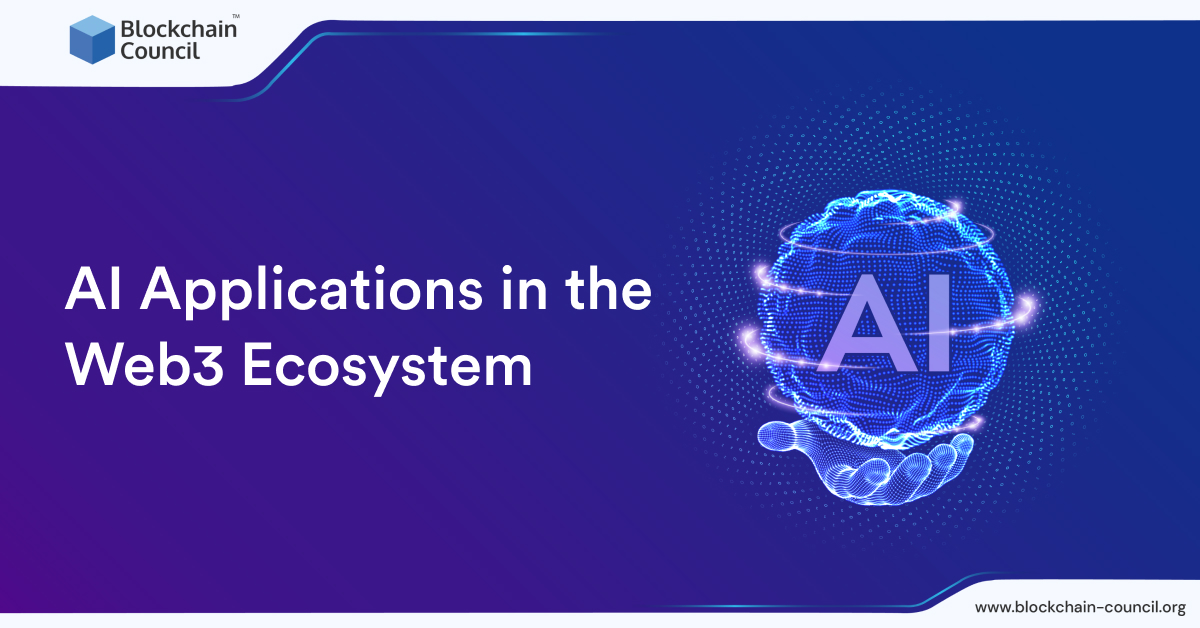
- Blockchain Council
- November 25, 2024
Artificial intelligence (AI) has become increasingly important in oil and gas exploration and production. This sector faces various difficulties like high costs, complex logistics, and environmental issues. By using AI, companies have found ways to boost efficiency, lower costs, and work in a more sustainable way.
Making Exploration More Accurate and Cost-Effective
One of the key ways AI is changing the industry is through exploration. Traditionally, finding oil required long, expensive processes. However, AI has introduced quicker and more accurate methods. These algorithms can now assess seismic and geological data to locate oil-rich zones with better precision. For instance, ExxonMobil uses AI in its exploration activities, predicting reservoir conditions and identifying ideal spots for drilling. This technology has cut down exploration times and prevented drilling in non-productive areas.
Additionally, AI-driven models can study historical data to predict where new deposits may be found. This leads to fewer financial risks when drilling in unexplored areas, increasing efficiency in resource extraction.
Earning the Certified Artificial Intelligence (AI) Expert™ certification can give you insights into how AI is making oil and gas exploration more efficient.
AI’s Impact on Data Analysis in Exploration
The industry collects vast amounts of data, particularly from seismic studies and geological surveys. Traditional methods of analyzing this information can be slow and use a lot of resources. AI has come in as a helpful tool, rapidly processing large datasets and identifying potential oil and gas reserves more accurately.
Companies like Shell have turned to AI to improve their deep-sea exploration. By partnering with AI startups, they’ve enhanced seismic analysis, using AI to predict the location of oil and gas deposits more effectively. It helps save time, cut costs, and lower the risks tied to exploratory drilling.
Optimizing Drilling and Production Processes
Drilling operations are known to be complex, with several factors affecting both safety and efficiency. AI is widely used to optimize these processes by analyzing real-time sensor data. For example, AI systems can adjust the direction of drilling instantly to improve precision and cut down on delays. This has helped operators increase production while reducing unnecessary costs and downtime.
Petrobras, for example, uses AI to monitor rigs and offshore equipment. Automated inspections with AI-powered drones and robots reduce human involvement in dangerous environments, improving both safety and operational efficiency. These tools allow companies to react faster to changes, improving decision-making and resource management.
If you’re looking to expand your knowledge of AI in exploration, the Master Artificial Intelligence (AI) Learning Path offers insights into how AI can enhance decision-making in oil and gas production.
Streamlining Supply Chain and Logistics
Beyond exploration and drilling, AI is also helping to improve the supply chain in the oil and gas industry. AI can also be used to analyze data, predict demand, manage inventory more efficiently, and optimize transportation. This is particularly useful in logistics, where AI can cut down fuel usage and reduce delivery times.
By using AI in supply chain management, businesses can better meet market needs, cut down on waste, and boost profits.
Predictive Maintenance and Monitoring of Equipment
Another area where AI is proving valuable is predictive maintenance. Sensors placed on machinery collect data, which AI analyzes to predict when equipment might fail. This allows maintenance to be done before breakdowns happen, preventing expensive shutdowns and lowering accident risks. Moving to this kind of proactive maintenance has led to better safety and cost management.
AI is also used to monitor pipelines, refineries, and offshore installations to detect any signs of wear, corrosion, or damage. Companies like SLB (previously Schlumberger) use AI-powered platforms to optimize the performance of equipment and predict maintenance needs, helping avoid unplanned downtime.
With AI playing a larger role in exploration, the Certified Artificial Intelligence (AI) Developer™ credential equips you with the tools to build more efficient systems for the oil and gas industry.
Improving Safety with AI
Safety has always been a priority in the oil and gas sector, and AI is now playing a large part in improving safety measures. AI systems can monitor sensor data in real-time to detect potential hazards, allowing companies to take preventive action before incidents occur. On offshore platforms and in refineries, AI-driven robots and drones are increasingly handling routine inspections, reducing the need for humans to work in dangerous environments.
AI also helps companies stay within environmental regulations. By tracking emissions and improving energy use, AI supports companies in achieving sustainability goals while keeping their operations efficient.
Challenges in Integrating AI
Despite all its advantages, integrating AI into oil and gas operations comes with a few hurdles. One major issue is data quality. The industry handles vast amounts of fragmented information from various sources, making it challenging for AI systems to provide complete insights. Another challenge lies in the industry’s traditional culture, which can be slow to adopt new technology. However, companies like Shell and ExxonMobil, which have embraced AI, show that these barriers can be overcome, leading to significant improvements in operations.
For companies to fully benefit from AI, they need to shift culturally. Workers need training to collaborate effectively with AI tools. However, cybersecurity issues need attention since connected AI systems can be targeted by cyberattacks.
What’s Ahead for AI in Oil and Gas?
The advantages of AI in exploration, production, and logistics are becoming clearer. Companies using AI are staying competitive by cutting costs, boosting production efficiency, and improving safety. Looking forward, AI’s full potential in the oil and gas sector is still being explored. There are still hurdles, such as combining data from various sources and overcoming organizational reluctance to embrace these technologies.
AI will keep advancing, offering more advanced tools to handle complex tasks. There are already emerging developments like autonomous drilling rigs and more sophisticated AI-driven robots, pushing the boundaries of what’s possible in oil and gas operations. As companies explore these capabilities further, they’ll likely see greater efficiency, safety improvements, and enhanced environmental performance.
Conclusion
AI has quickly become essential in the oil and gas sector, transforming everything from exploration to equipment maintenance. By integrating AI, companies can process data faster, make smarter decisions, and operate more sustainably. As AI continues to progress, its role in the industry is expected to expand, making it an essential tool for modern oil and gas operations.
AI in the oil and gas sector requires staying up to date. Our Unlimited Learning Subscription (AI) keeps you always updated to make the most of exploration and production processes.





































































 Guides
Guides News
News Blockchain
Blockchain Cryptocurrency
& Digital Assets
Cryptocurrency
& Digital Assets Web3
Web3 Metaverse & NFTs
Metaverse & NFTs
